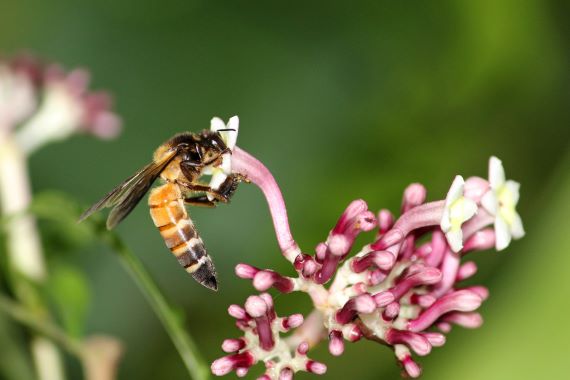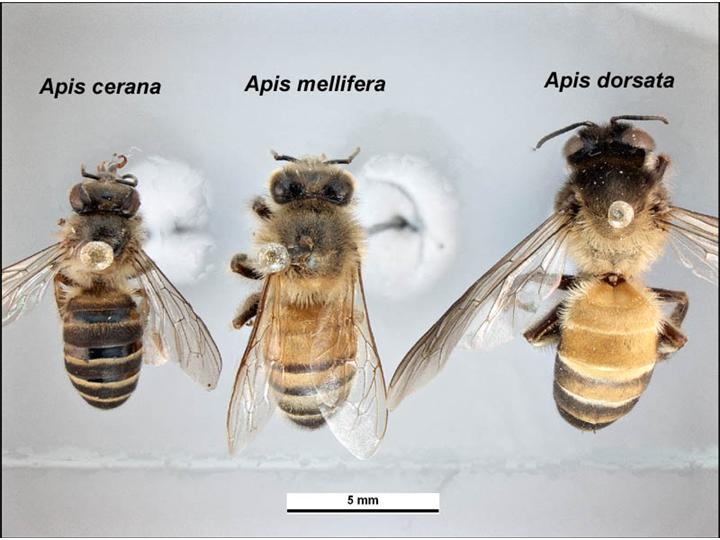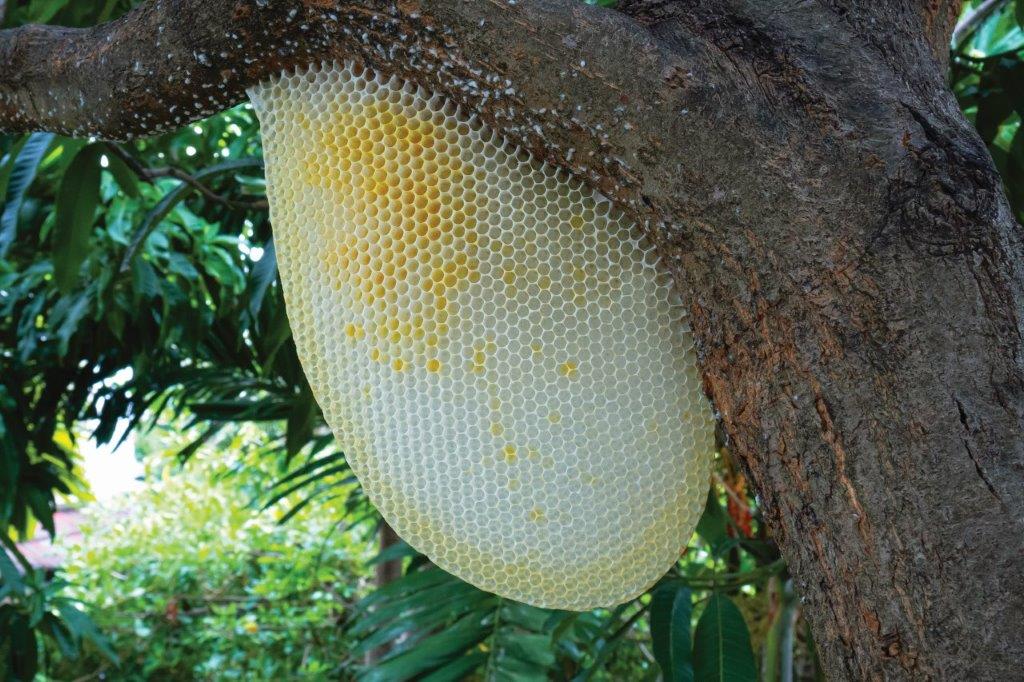
Giant honey bee



Apis dorsata
Should I report?
Giant honey bees are the world’s largest honey bees, growing up to 20 mm long. Giant honey bees are not known to be present in Australia. Report suspect giant honey bees
- Call the Exotic Plant Pest hotline on 1800 084 881,
- Submit an online form, OR
- Email biosecurity@dpi.nsw.gov.au
Include a photo of the insect as part of your report
Description
There are three different species of giant honey bees, (Apis dorsata, Apis laboriosa and Apis brevigulia), their sizes range from 17-20mm and can vary in colour from pure black to a pale yellow abdominal banding. They have clear wing colour with dark brown veins.
Giant honey bees build single combs under supports such as tree branches or buildings in aggregations of 100 or solitary with a nest size of approximately 60,000 bees. Giant honey bees can migrate seasonally traveling vast distances, sometimes up to 200km over many months to follow the wet season building combs along the way.
Distribution
Distributed across South and Southeast Asia, the giant honey bee has been farmed by indigenous people for their honey and beeswax. The giant honey bee is not known to be present in Australia.
Damage
Giant honey bees are competitors to other pollinating species and restrict available nesting sites. They can spread unwanted mites and diseases disrupting the environment and threatening the economic market.

